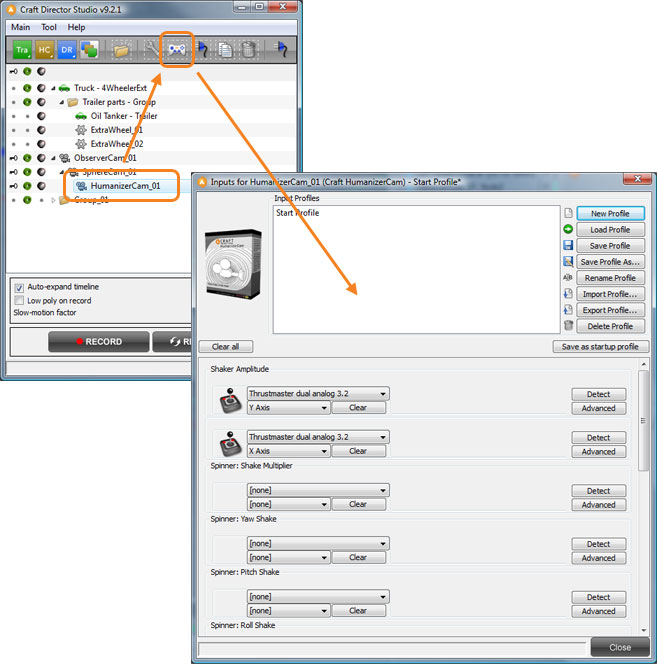
Craft 4-Wheeler Free is a simulator for 4-wheel vehicles. This animation tool makes it easy for the user to create realistic simulations for vehicles in motion. The vehicle is controlled with an input device directly through the 3d application. The user links the model that will be rendered to Craft 4-Wheeler Free for it to inherit it’s movement. Steering, braking, boosting, skidding, etc. is performed in real-time with a DirectX input device, keyboard or 3dxmouse. All Craft 4-Wheeler parameters can be altered in real time and may create some very peculiar car shape changes during recording.
The surface on which Craft 4-Wheeler Free drives can take any shape, be upside down or twist oddly. Surfaces can even be animated during recording with Craft 4-Wheeler Free.
Craft 4-Wheeler Free can also be combined with other products from Craft Director Studio. For example: it is possible to use Craft Extra Wheel and Craft Trailer together with Craft 4-Wheeler Free to create a truck.

|
Select the Craft 4-Wheeler Free in the tool tree list and click on the Input settings button in the tool bar. This will open the input settings window for Craft 4-Wheeler Free.
Read more about Input settings >>.












Drives the vehicle forward.

The vehicle will brake as much as possible without locking the wheels until it comes to a stop. If a digital input (i.e. a button) is used, you will brake with full force directly. If an analog input used, you’re able to control how much force you’re braking with.


Drives the vehicle forward.

Turns the vehicle right or left. 

Gives the vehicles a boost in velocity.

Locks the wheels and brakes the vehicle until it comes to a stop.

The rear wheels spin to create a burnout.

Acceleration (in Percent)
A percent value that determines how strong and fast the engine is. 100% equals maximum acceleration. A lower percentage value equals lower acceleration.
Top Speed
A percent value that determines how fast the vehicle is. 100% equals maximum speed. A lower percentage value equals lower top speed.
Maximum Steering Angle
The maximum angle of the steering wheel.
Brake Force (in Percent)
A percent value that determines how strong the brakes are. 100% equals maximum brake force. A lower percentage value equals lower brake force.
Suspension (in Percent)
A percent value that determines how much force and damping the springs have. 100% equals maximum stiffness and damping. 0% equals very low stiffness and damping.
Weight (in Percent)
A percent value that determines how much the vehicle weighs. 100% equals maximum weight. A lower percentage value equals lower weight.